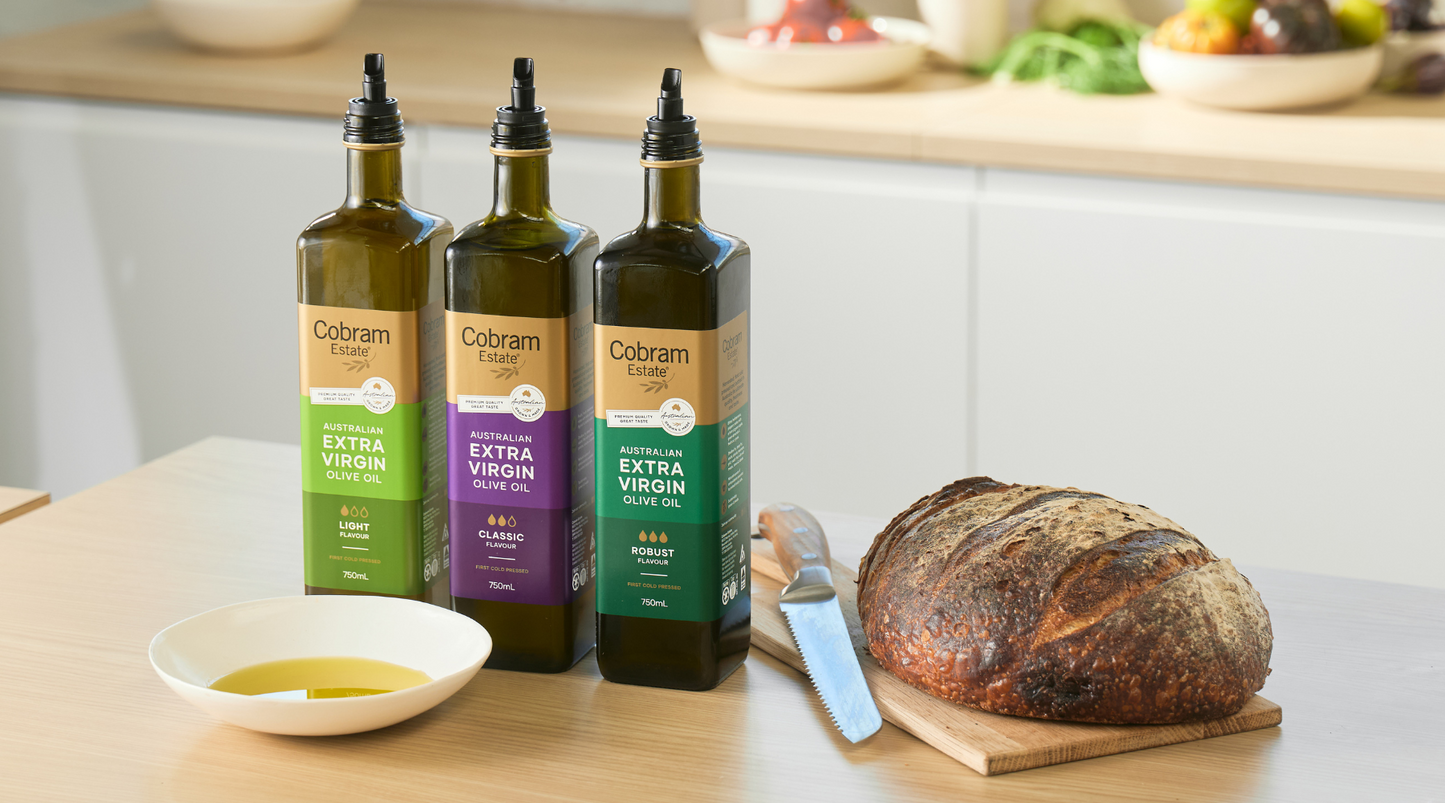Ingredients:
Ragù:
- 3 tbsp Cobram Estate Robust Extra Virgin Olive Oil
- 350g pork belly rashers, cut into 4 cm pieces
- 2 thick pork sausages
- 300g chuck steak, cut into 5 cm pieces
- Sea salt
- 1 onion, very finely diced
- 1 carrot, very finely diced
- 1 stick of celery, very finely diced
- 1 sprig of rosemary
- 1 fresh bay leaf
- 150ml dry red wine
- 700g passata
- 2 cloves
Pasta dough:
- 200g tipo 00 flour (plain flour can be used if you don't have tipo 00 flour)
- 200g semolina flour (semola rimacinata), plus extra for dusting
- 4 eggs
- Sea salt
Ravioli filling:
- 450g fresh ricotta
- ½ tsp freshly grated nutmeg
- 30g parmigiano reggiano, grated
- Salt and black pepper
Method:
- Warm the Cobram Estate Robust Extra Virgin Olive Oil in a large heavy based saucepan over a high heat. Brown the meat on all sides, working in batches to not overcrowd the pan. Remove the meat and set aside.
- Reduce the heat to low and add the onion, carrot, celery, rosemary and bay leaf and cook until soft and beginning to colour (around 15 minutes). Return the meat to the pan, increase the heat to medium-high. Pour in the wine and allow it to simmer to let the alcohol evaporate, scraping the bottom of the pan with a wooden spoon. Add the passata along with 400ml of water and the two cloves. Bring to the boil, then reduce the heat to low and cook covered for 1.5- 2 hours, or until the sauce is thick and rich and the meat tender.
- To make the pasta dough, tip the flours and salt onto a clean work surface and combine. Create a well in the centre and crack in the eggs. Gently whisk the eggs using a fork, then slowly bring in the flour and mix to incorporate. When the dough becomes stiff, use your hands to mix until the dough is soft and malleable.
- Knead for about 10 minutes until the dough is smooth and elastic. Flatten into a disc, cover with an upturned bowl or plastic wrap and allow to rest at room temperature for at least 30 minutes.
- To make the ravioli filling, mix all of the ingredients together until smooth. Season with salt and pepper and set aside in the fridge until ready to use.
- On a lightly floured work surface, roll out ¼ the dough using a rolling pin into a rough disc shape around 3 mm thick. Roll the dough through a pasta machine set to the widest setting, then roll again through the narrower settings, dusting with a little flour between each roll if needed, until the pasta sheet is about 30 cm long. Fold the dough back in on itself so it’s a bit narrower than the width of the machine and use a rolling pin to flatten slightly. Set the machine back to the widest setting and roll back through the first settings again, folding and flattening the pasta dough before each roll. Repeat this process two more times, so you’ve rolled the dough through the widest settings, folding between each roll, three times in total. This makes the pasta nice and strong, and you can now roll the dough through the settings until the pasta is around 1.5 mm thick.
- Lay the sheet of pasta dough onto a ravioli stamp tray and fill with a heaped teaspoon of filling along each indentation. Cover with the overhanging pasta sheet and press down to remove any air. Gently but confidently invert the tray onto your board. Cut along the markings with a fluted pasta cutter to create the ravioli.
- Set aside on a tea towel dusted with semolina flour and repeat with the remaining dough and filling, re-rolling any scraps of pasta.
- Alternatively if you do not have a ravioli stamp tray, dot the filling onto a pasta sheet, about 1-2 cm apart, and cover with another sheet. Press down to remove any excess air around the filling then use a fluted pasta cutter or ravioli stamp to create the ravioli.
- Meanwhile, cook the pasta in plenty of salted boiling water until al dente, around 3-4 minutes.
- Remove the meat from the sauce and set aside. Transfer the ravioli to a serving dish and top with enough sauce to coat the pasta and plenty of grated parmigiano reggiano. Toss gently to coat. Drizzle with a little extra Cobram Estate Robust Extra Virgin Olive Oil and serve immediately.
- Serve the braised meat as a second course with vegetables or a salad.





